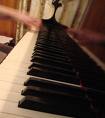 Last Friday, over lunch with a friend, the discussion turned to ways to make classical music relevant to younger audiences. This hoary topic tends to make conversation spiral around in circles. But I feel that there’s enough happening in the field these days to suggest that composers and musicians are doing what they can to reach out to younger audiences. This great article in the Financial Times by Laura Battle explores the topic in some depth. But in general, arts institutions have been slower to catch on.
Last Friday, over lunch with a friend, the discussion turned to ways to make classical music relevant to younger audiences. This hoary topic tends to make conversation spiral around in circles. But I feel that there’s enough happening in the field these days to suggest that composers and musicians are doing what they can to reach out to younger audiences. This great article in the Financial Times by Laura Battle explores the topic in some depth. But in general, arts institutions have been slower to catch on.
Here in San Francisco, there is a modicum of institutional buy-in to the idea that classical music can break free of stuffy concert halls and stiff concert etiquette. The San Francisco Symphony runs its After Hours events in the second tier lobby at Davies Symphony Hall. These are popular with a younger crowd. Museums are starting to get the hang of creating a more free and easy atmosphere for audiences to hear music – yesterday’s blog post about Friday night’s L@TE event at the Berkeley Art Museum provides an example of how institutions are collaborating with musicians to bring new audiences to contemporary classical music.
I would like to see more actual presenters of classical music events range beyond their habits and try new things. Why shouldn’t San Francisco performances, Old First Concerts or Stanford Lively Arts produce cool, adjunct events to accompany their main stage concerts at the usual auditoriums? Logistics notwithstanding, there must be a way to create buzz around all these great artists playing in town by having them perform a low-key, short set perhaps with collaborators from other musical genres like jazz and electronica, dancers or visual artists, in a club or other convivial spot prior to the mainstage concert.
Come on, classical music presenters: let’s get creative.
